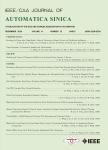版权所有:内蒙古大学图书馆 技术提供:维普资讯• 智图
内蒙古自治区呼和浩特市赛罕区大学西街235号 邮编: 010021

作者机构:The Military Academy University of Defence Beograd11042 Serbia The Faculty of Automatic Control Electronics and Computer Science Silesian University of Technology Gliwice44-100 Poland The CCS Graduate School of Mobility Korea Advanced Institute of Science and Technology Daejeon Korea Republic of
出 版 物:《IEEE/CAA Journal of Automatica Sinica》 (IEEE CAA J. Autom. Sin.)
年 卷 期:2024年
核心收录:
学科分类:0711[理学-系统科学] 0808[工学-电气工程] 0809[工学-电子科学与技术(可授工学、理学学位)] 08[工学] 0714[理学-统计学(可授理学、经济学学位)] 0811[工学-控制科学与工程] 0701[理学-数学] 0702[理学-物理学]
主 题:Disturbance rejection
摘 要:In this paper, we show the performance benefits of connecting multiple observers within a control system. We focus here on a particular observer-based control approach, namely the active disturbance rejection control (ADRC) with cascade extended state observer (ESO). For this framework, we analyze the control performance in terms of quality of observer estimation, reference tracking, disturbance rejection, sensitivity to measurement noise/unmodeled dynamics, and overall stability. A comprehensive frequency response analysis is performed to study the influence of cascading the observers on the selected quality criteria. To make the inquiry beneficial also to practitioners, FPGA-in-the-loop tests are conducted using a guided missiles gimbaled seeker. They validate the theoretical findings in discrete-time settings, where the sampling time and hardware resource requirements become a factor. The results of the investigation are distilled into guidelines for prospective users on when and how a cascade observer structure can be useful for controls. © 2014 Chinese Association of Automation.